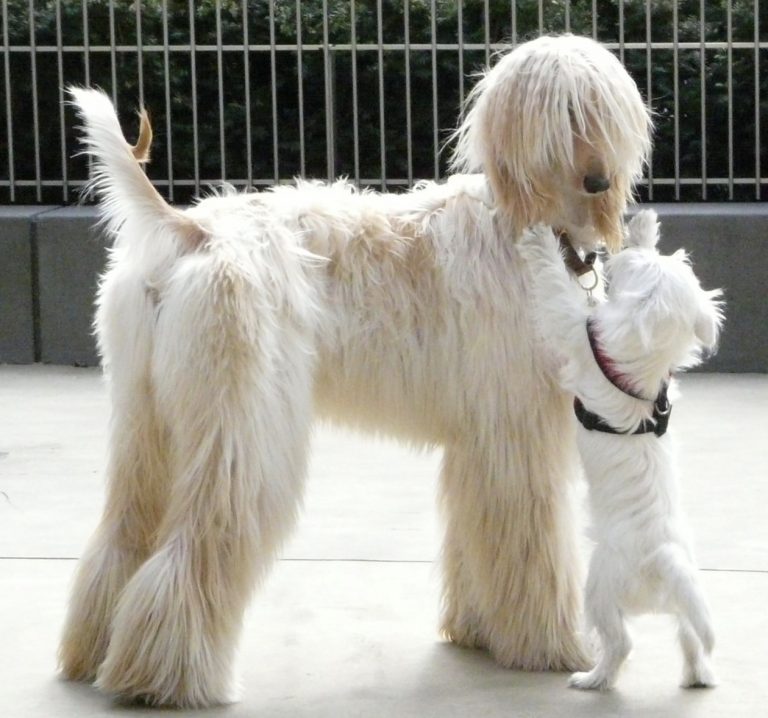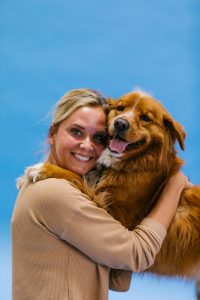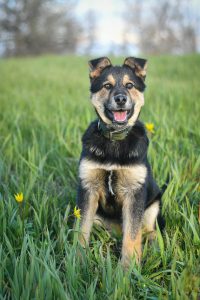No matter if you have an excited dog, calmed dog, a hyperactive dog, or any other puppy, you need to work on its confidence. Even the most stable dog can be insecure about anything. There are dogs that are insecure about everything. Here is an example, Milo is not secure when we are in a crowded place.
Yes, we try to avoid a crowded place as much as possible, but we also work on improving his low self confidence and making him confident when we are out in a place with lots of people.
Socialization is a huge part of confidence building. Today, I will try to explain to you how to build your dog’s low self confidence, and why it is important in the first place. Social skills are just as important for your pet as they are for any person.
Why is a dog’s confidence so important?
What do we say about people? The most successful people are those who are confident in their work. Well, the same applies to canines and animals. Being confident means your dog can take life’s daily stressors in stride. Yes, there are situations where you cannot do anything (like thunderstorms and fireworks).
A confident person can handle any situation in life. Your goal is to have a dog like that. One that can handle different situations with pride and positive emotion.
Here is an example. You accidentally break a pot in the kitchen. It is something that can happen on a daily basis. If your dog is not confident, and his confidence is low, he might not even try to approach the kitchen. But a confident dog will go continue what he/she is doing.
Fear, discomfort, and similar reactions can cause a spike in the stress hormone in dogs. And in the same way, cortisol is bad for us, it is bad for our canine friends as well. Dogs are under frequent stress are at risk of health problems like vomiting, diarrhea, low immune system, and loss of appetite.
And if you do not have a confident dog, you cannot train it. An unconfident dog will not respond to the challenge of obedience training and positive reinforcement.
And how can you let that dog be happy and joyful in life? How can you let an unconfident dog off-leash? You simply cannot. Build your pup’s confidence level to let your dog be a dog and enjoy life.
How and where to begin?
When it comes to building your dog’s confidence, it is important that you start with small things. Here are some confidence building exercises and ideas you can try.
For example, teach your dog to put his paws on random objects around the house. Try to imitate different surfaces under his paws. This will boost his confidence that it is ok to investigate different things and the world with his paws.
This will also help your dog confidently walk outside. Do you know there are actually dogs who are afraid of stepping on grass?
Then, start to encourage your dog in other aspects, for example barking enthusiastically when being asked. Now, we are not saying you should allow barking and tolerate it. But, barking is a communication tool. And your dog uses it to communicate with you. Encourage it for proper situations.
The next thing you can do is try to do commands faster and have your puppy sit on random objects. Increase the difficulty gradually. Increase the challenge.
But the most important thing is to set up your dog to win in life. The more he wins, the happier he is, and the more he wants to train and work with you. Do not push your dog to a challenge he cannot perform.
Confidence building prevents things like sudden and mindless reactions and saves lives. If your dog is spooked by simple things, that can be dangerous for you and your puppy while walking outside
Confidence building also prevents reactivity in dogs. Some dogs are reactive because of fear and insecurity. They reflect that behavior as defending mechanism. Build confidence to get a calm dog that will make the right decision every time.
Once your dog is more confident at home, start with some basic obedience on walks. Bring some yummy treats and repeat commands like sit, lie down, and similar during your walks. Remember, a walk is more than just a potty walk.
How training can help?
Training will boost your dogs confidence. Most dogs have a natural instinct to work and perform. Even those who are not working dogs.
When faced with something scary, like being uncomfortable around other dogs, our dogs tend to focus on the scary thing and ignore everything else.
When that scary thing becomes the focus, you will have a hard time shifting their attention to something else. Building confidence level will prevent that, and training can help with making sure your puppy focuses on the right thing every time.
With training, you show your puppy that the scary thing is not scary, and also redirect your puppy’s attention.
Training gives your puppy something else to focus on during your walk and time outside. Rather than being afraid, your dog is performing well during its training session and is happy doing it.
Training Takes Time
Remember, there is no quick fix for helping a shy or fearful dog to gain confidence. It will take time. A lot of it. You must be patient and work gradually to get to the spot where both you and your pooch are happy.
Once you start working on obedience, you will notice a different behavior in your puppy. Keep in mind, that it is a process. It is not something that happens overnight.
Desensitization
One thing you can also implement in your training for building your dog’s confidence is desensitization. It is a way to expose your puppy over and over to something he/she is afraid of. And the more you expose it, the less he reacts.
Now, it takes time and gradual exposure. The best thing you can do is call a friend to help. But here is a simple scenario. Your dog is afraid of passing by a certain spot. Encourage your puppy to pass it, and then after a successful try, reward. Then do it again. And again. And again. After several tries, your puppy will walk confidently by that spot.
For example, when Milo passes by some houses with a dog in the yard, he might react. But we pass by the same house three to five times in a row, and he doesn’t react. He reacts only the first time.
It will take time, but you can increase your dog’s confidence through training.
Determine Your Dog’s Triggers
The most important part of confidence training is to determine the triggers of your puppy. Dogs have predictable triggers that can put them into a reactive behavior.
Identify them one by one and then reduce the severity by desensitization. And by setting up your dog to win.
It will take time, but you will get there.






